NSW floods: Farmers to rebuild again after beating drought, bushfires
They have hung on through drought and rebuilt after fire. Now our flood-stricken farmers are once again counting the cost of trying to make a life on the land after the devastating floods.
NSW
Don't miss out on the headlines from NSW. Followed categories will be added to My News.
There was no room for error as the floodwaters started rising on John Polson’s farm. The lifelong dairy farmer did everything right, from moving his cows to higher ground and placing his seeds on top of towering hay bales out of the water’s reach.
When the muddied water spilled over from the Manning River and left some cows standing neck-high in water, Mr Polson shuffled the cattle onto a truck, where they stayed above the water line for two days.
But when the waters receded to reveal the damage, Mr Polson learned he’d lost between eight and 10 dairy cows in the floodwaters.
He currently has seven cows on his property that aren’t his after they were swept downstream from neighbouring properties and clambered onto whatever dry land they could.
“I went home Saturday morning thinking that will be about it,” the 61-year-old said.
“Then the river at the house was going so fast and next thing a big cow jumped up on the side of the river near me pool.
“Unbelievable.”
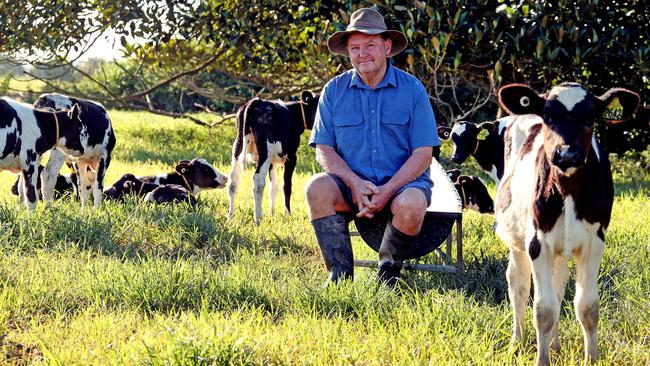
After making it through the drought, the Polson dairy was in a pretty good spot, the Oxley Island farmer said.
Now some of his cows have mastitis and their milk will have to be thrown out, a problem dairy farmers across the region are facing. That means a hit to production and for Mr Polson, an estimated six to eight weeks before his operation completely bounces back.
“I heard someone say on the radio that it’s the price of living in paradise,” he said as tears welled up in his eyes.
For many families on NSW Mid North Coast, the past few years have been one disaster after another — the worst ever drought, the worst ever bushfires, a once-in-a-lifetime pandemic and a one-in-a-100-year flood.
The Manning Valley’s high annual rainfall is what makes it an attractive region for dairy farmers in NSW.
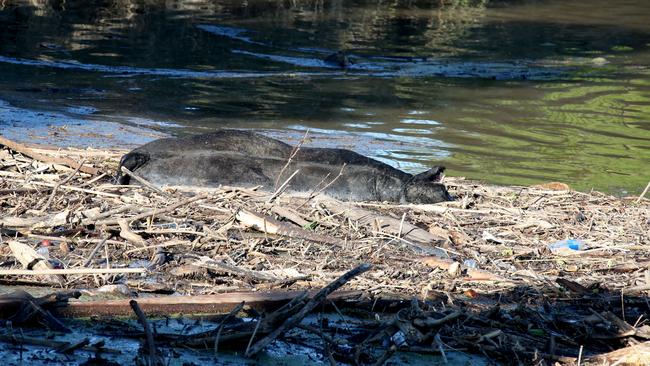
But many of those farmers are counting the cost of last week’s major flood with dead stock washing up on beaches and in backyards, flooded machinery, soaked feed and damaged fences that had only just been repaired after the fires.
While the true extent of the damage to property and livestock is still being assessed, it’s estimated between 150 and 200 dairy farmers have been impacted by the flood disaster.
“Of that about 20-25 dairy farms have been severely impacted, including massive loss of stock, pasture, destroyed fodder and not to mention the genetics built up over generations,” Dairy Connect chief executive officer Shaughn Morgan said.
There are a handful of dairy farms squeezed onto Oxley Island, a low -lying area bordered by the wide Manning River south of Port Macquarie. The families have been farming in the area for decades with many living through the last major flooding event in 1978.
While this flood was less of a surprise, Mr Polson said, the waters were about one metre higher at his Oxley Island farm this time around.
“There was no room for error,” he said.
“I made everything right but some just weren’t tall enough and drowned. It was terrible. Some were just unlucky. A really nice big one was swimming to safety and got caught in the fork of a tree and she drowned there.”
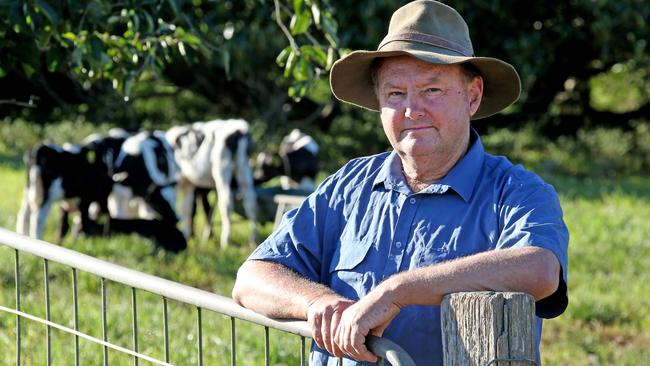
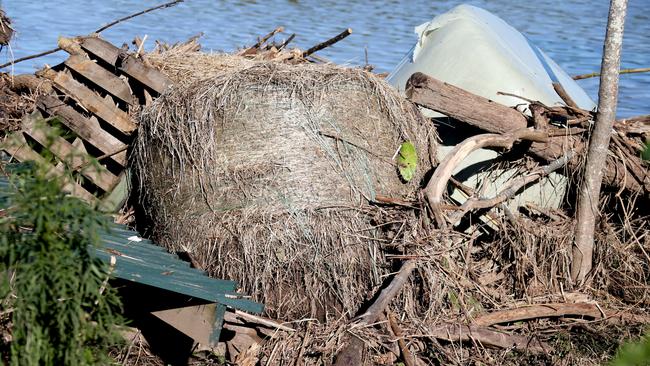
Down the road on Cowans Lane, 420mm of rain fell on the Croker family property in a single day on March 19.
Water lapped under their house and crept across the green paddocks, threatening the pasture that had grown tall after the Black Summer bushfires.
But after battling through years of drought, when Rosanne and Darren Croker hand-fed their bone-thin cattle on a property that looked like a “moonscape”, they could never curse the rain.
No matter how hard and fast it fell.
“I just can’t begrudge the rain after not having it for so long through the drought,” Mrs Croker said this week.
Her husband jumped in: “A flood is better than a bushfire. Fire takes everything.”
Mr Croker runs more than 300 cattle on his Oxley Island property and another farm about two hours drive inland. His land, now vibrant green with knee-high grass, was scarred and unrecognisable after bushfires tore through the Mid North Coast in 2019.
Then COVID-19 hit last year and put his other family business, Australia’s only oar manufacturer, Croker Oars, on hold.
Mr Croker, who was used to working 16-hour-plus days across both businesses, used the downtime to fix the damage caused by the bushfires months earlier — including 55km
of fencing.
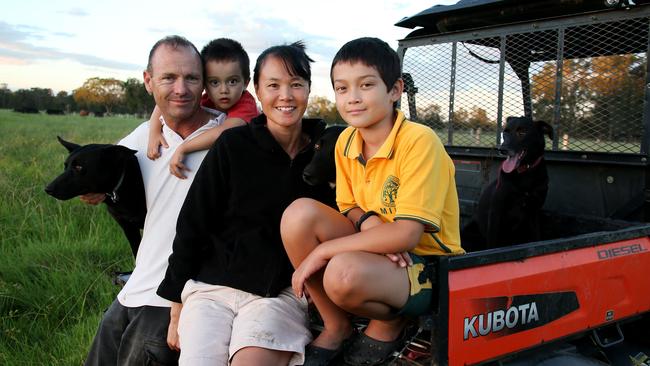
He wasn’t eligible for any bushfire or drought recovery grants or subsidies because of his second business, which his father started in 1962.
Back then, Howard Croker would spend an entire day crafting a single wooden oar (some of which adorn the walls of Harvard University) but today, the carbon fibre oars are favoured by Olympic rowing teams around the world.
When the floodwaters started rising last week, Mr Croker was in Tasmania servicing his oars at the Australian Rowing Championships.
Most of his cattle had moved to higher ground on his second property but his home on Oxley Island, and a few cows on that farm, were at risk of going under. After losing 100 cows in the bushfires, Mr Croker was reluctant to lose anymore.
On Sunday morning, he made a mercy dash home.
After arriving in Sydney on a flight from Hobart, he borrowed his father-in-law’s car and drove as far north as he could.
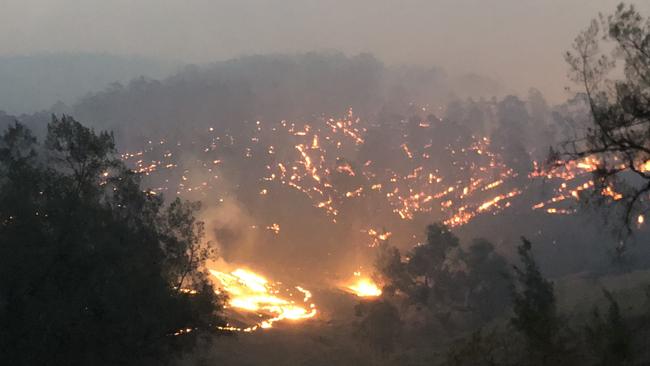
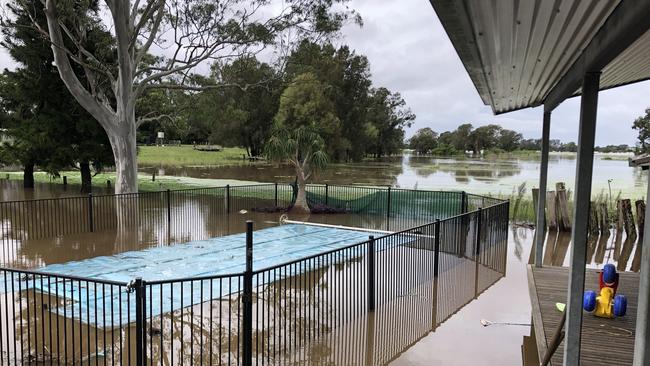
He met up with his brother in Old Bar, across the river from the Croker farm, and drove a 4WD to the top of Cowans Lane.
From there, he jumped in a canoe and paddled the remaining stretch in complete darkness.
“I rang my wife just in time and said leave a canoe there because I don’t feel like swimming at 10pm,” he said.
He walked through the door at 11pm.
His wife had been running on adrenaline for the previous 48 hours – packing the car, lifting furniture off the floor, getting the six working dogs and Border Collie puppies to safety, checking the water levels at 2am.
When Mr Croker walked through the door, she burst into tears.
The couple haven’t been able to reach their second property yet but expect extensive fence damage and washed out creek crossings await them.
Despite the mounting repair bill, Mr Croker stressed there were others worse off than him.

On Friday, NSW Deputy Premier John Barilaro announced the program that has helped farmers to repair their fences after the fires would be expanded to help those impacted by the flood.
“You know what the sad thing is some of these fences that went under water are the same fences we built after the fires,” he said in Wauchope on the Mid North Coast.
“That program is still alive. There is funding in that program and so will just move that program along to assist those with fencing needs.
“We may even engage with BlazeAid again to see where they can set up again.”
Primary producers will also be eligible for $75,000 disaster recovery grants.
“The clean up now begins, the sun is out and the water is receding,” Prime Minister Scott Morrison said on Friday.
“There is going to be more difficulty ahead particularly for primary producers.
“Whether they are oyster farms or dairy farmers or other producers across the district they have some difficult days ahead.
“Those $75,000 grants are critical for producers to get back on their feet but know we are backing them in.
“We will be there to help them re-stock and rebuild and get their machinery up and running again and get their operations up and running again.”



